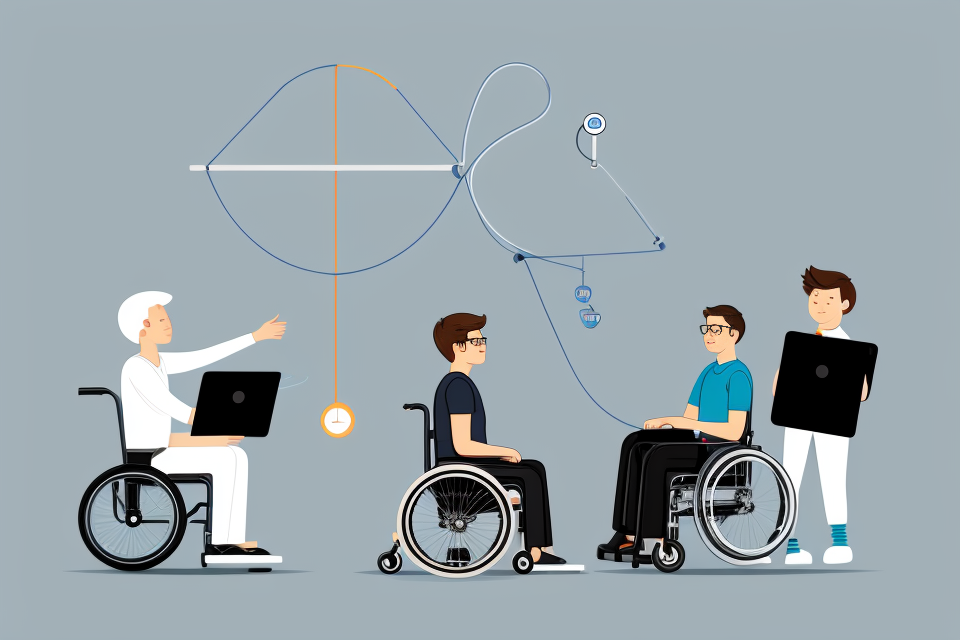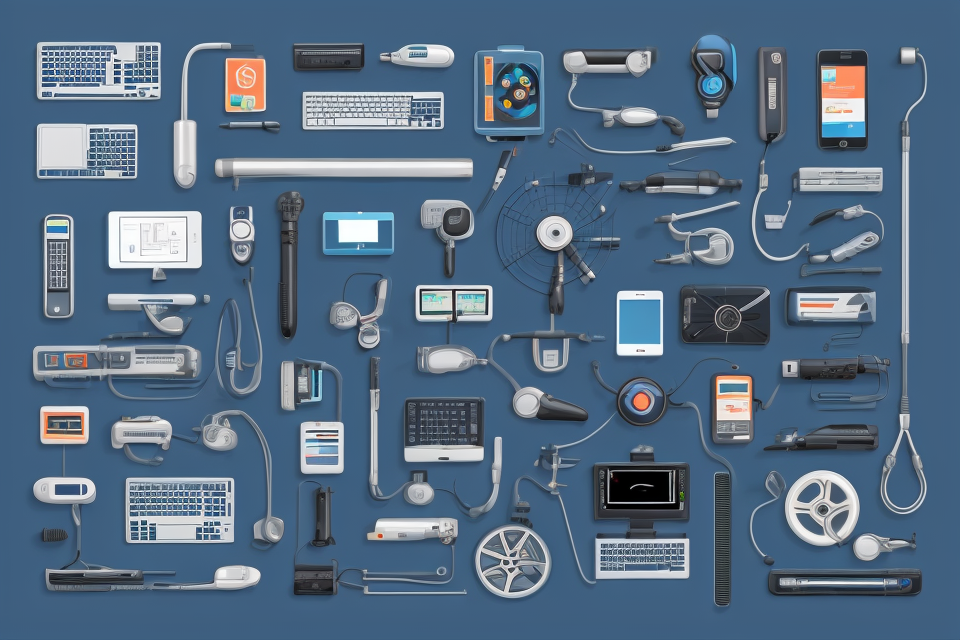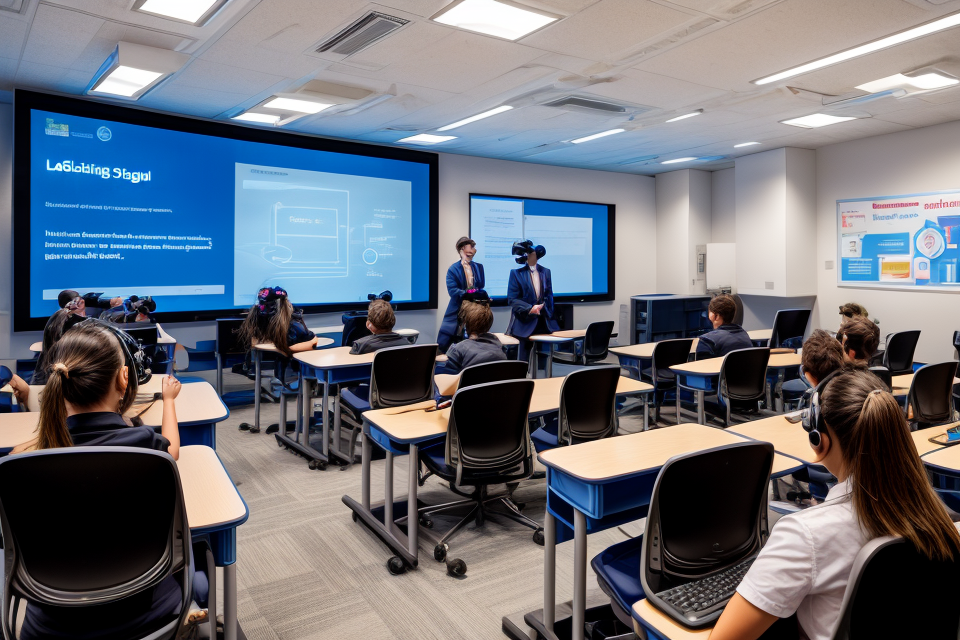
Assistive technology refers to the various devices, software, and tools that are designed to help individuals with disabilities or impairments perform tasks that might otherwise be difficult or impossible for them. These technologies can range from simple devices like specialized keyboards and mouse to more complex systems like voice recognition software and advanced prosthetics. In this article, we will explore the three levels of assistive technology, which are categorized based on the degree of support they provide. Understanding these levels can help individuals and families make informed decisions about the types of assistive technology that may be most appropriate for their needs. So, let’s dive in and explore the three levels of assistive technology!
The three levels of assistive technology are: 1) Simple (also known as “low-tech”) solutions such as wheelchairs, walkers, and hearing aids. 2) Complex (also known as “high-tech”) solutions such as voice recognition software, adaptive keyboards, and specialized communication devices. 3) Enabling (also known as “environmental”) solutions such as ramps, grab bars, and adjustable furniture. All three levels of assistive technology are designed to help individuals with disabilities or special needs improve their daily functioning and independence. The type of technology used will depend on the individual’s specific needs and abilities.
Understanding Assistive Technology
Definition of Assistive Technology
Assistive technology is a term used to describe a wide range of devices, tools, and systems that are designed to help individuals with disabilities or impairments to perform tasks that might otherwise be difficult or impossible for them to accomplish. This technology can range from simple, low-tech solutions such as grab bars and ramps, to complex, high-tech devices such as voice recognition software and advanced prosthetics.
One of the key characteristics of assistive technology is that it is designed to be user-centered, meaning that it is tailored to meet the specific needs and abilities of the individual user. This can involve customizing existing technology or developing new solutions from scratch.
Assistive technology can benefit individuals with a wide range of disabilities, including physical, sensory, cognitive, and communication impairments. It can help individuals to live more independently, improve their mobility and communication, and increase their ability to participate in education, work, and other activities.
Overall, assistive technology plays an important role in enabling individuals with disabilities to live more fully and independently, and to participate more fully in society.
Importance of Assistive Technology
Assistive technology has become an integral part of modern society, enabling individuals with disabilities to live more independent and fulfilling lives. The importance of assistive technology can be understood through the following points:
- Enhances independence: Assistive technology allows individuals with disabilities to perform tasks that they may not have been able to do without assistance. This enhances their independence and gives them a greater sense of control over their lives.
- Improves accessibility: Assistive technology helps to bridge the gap between individuals with disabilities and the world around them. It provides tools and devices that make it easier for people with disabilities to access information, communicate, and interact with their environment.
- Increases participation: Assistive technology enables individuals with disabilities to participate more fully in education, work, and social activities. It helps to level the playing field, allowing people with disabilities to contribute their skills and talents to society.
- Promotes inclusivity: Assistive technology promotes inclusivity by providing tools and devices that enable individuals with disabilities to participate fully in society. It helps to break down barriers and creates a more inclusive environment for everyone.
- Supports health and well-being: Assistive technology can also support the health and well-being of individuals with disabilities. For example, devices that help with mobility can improve physical health, while those that support communication can enhance mental health.
Overall, the importance of assistive technology cannot be overstated. It has the power to transform the lives of individuals with disabilities, enabling them to live more independent, fulfilling lives and contributing to a more inclusive society.
Three Levels of Assistive Technology
Level 1: Simple Assistive Technology Devices
Simple assistive technology devices are basic tools that are easy to use and require little or no training. These devices are designed to assist individuals with physical, cognitive, or sensory disabilities in performing daily tasks. Examples of simple assistive technology devices include:
- Adaptive keyboards: These are special keyboards that have been designed to make typing easier for individuals with physical disabilities. They may have larger keys, more prominent key labels, or alternative key layouts to facilitate typing.
- Switches: Switches are devices that allow individuals to control a computer or other assistive technology device using a single switch. They may be used by individuals who are unable to use a keyboard or mouse.
- Voice recognition software: This technology allows individuals to control a computer or other device using their voice. It can be particularly helpful for individuals with physical disabilities that make it difficult to use a keyboard or mouse.
Other examples of simple assistive technology devices include:
- Eye-tracking devices: These devices allow individuals to control a computer or other device using their eyes. They may be particularly helpful for individuals with physical disabilities that make it difficult to use a keyboard or mouse.
- Environment control units: These devices allow individuals to control their environment, such as lights, thermostats, and door locks, using a single switch or other simple input device.
- Communication aids: These devices are designed to help individuals with communication disabilities to express themselves. Examples include picture communication boards, text-to-speech software, and augmentative and alternative communication (AAC) devices.
Overall, simple assistive technology devices are an important part of the assistive technology toolkit. They can help individuals with disabilities to perform daily tasks, communicate, and control their environment, improving their independence and quality of life.
Level 2: Complex Assistive Technology Devices
Complex Assistive Technology Devices are more sophisticated than basic devices and require specialized training and expertise to use. These devices are designed to support individuals with more significant disabilities or those who require more advanced assistance. Some examples of complex Assistive Technology Devices include:
- Electronic aids to daily living (EADLs): These are devices that help individuals with physical disabilities perform daily tasks. Examples include remote controls, environmental control systems, and electronic lock picks.
- Environmental control systems (ECSs): These are systems that allow individuals to control their environment using a single device. For example, a person with a spinal cord injury may use a device to control their home’s lighting, heating, and air conditioning.
- Augmentative communication devices: These are devices that help individuals with communication disabilities to express themselves. Examples include speech-generating devices, text-to-speech software, and symbol-based communication systems.
These devices are typically more expensive than basic devices and may require ongoing maintenance and technical support. However, they can significantly improve the quality of life for individuals with disabilities, allowing them to perform tasks that they may not have been able to do otherwise.
Level 3: Advanced Assistive Technology Devices
Advanced assistive technology devices are highly specialized devices that require extensive training and support. These devices are designed to help individuals with severe disabilities or complex medical conditions to improve their functional abilities and independence.
Some examples of advanced assistive technology devices include:
- Prosthetic limbs: These are artificial limbs that are designed to replace a missing limb or to enhance the functionality of a limb that has been partially lost. Prosthetic limbs can be customized to meet the specific needs of the individual and can be controlled through a variety of methods, including electrical signals from the muscles or brain.
- Cochlear implants: These are electronic devices that are surgically implanted in the ear to help individuals with severe hearing loss or deafness to hear sounds and speech. Cochlear implants work by converting sound into electrical signals that are transmitted directly to the auditory nerve, bypassing the damaged hair cells in the inner ear.
- Eye-tracking technology: This technology uses cameras and sensors to track the movements of the eyes and allows individuals to control a computer or other device simply by looking at different elements on the screen. Eye-tracking technology can be particularly useful for individuals with mobility or dexterity impairments, as it allows them to interact with technology without the need for a mouse or keyboard.
Advanced assistive technology devices can greatly improve the quality of life for individuals with severe disabilities or complex medical conditions. However, they are often expensive and may require ongoing maintenance and support. It is important for individuals and families to carefully consider the costs and benefits of advanced assistive technology devices and to work with healthcare professionals to determine the most appropriate options for their specific needs.
Factors to Consider When Choosing Assistive Technology
Cost and Availability
When choosing assistive technology, it is important to consider the cost and availability of the device. The cost of the device can vary greatly depending on the type of technology and the vendor from which it is purchased. Some devices may be covered by insurance or available through assistive technology loan programs, while others may require the individual to pay out-of-pocket. It is important to research the different options available and compare prices to find the most cost-effective solution.
Availability is also an important factor to consider when choosing assistive technology. Some devices may only be available in certain locations or through specific vendors, which can limit the options available to the individual. It is important to research the availability of the device in the individual’s area and to compare the options available to find the best solution for their needs.
It is also important to consider the long-term cost of the device. While some devices may be more expensive upfront, they may be more cost-effective in the long run due to their durability and the potential savings in healthcare costs. It is important to weigh the short-term and long-term costs when making a decision about which device to choose.
Overall, the cost and availability of assistive technology should be carefully considered when making a decision about which device to choose. It is important to research the different options available and to compare prices to find the most cost-effective solution that meets the individual’s needs.
Training and Support
Assistive technology is designed to help individuals with disabilities perform tasks that may be difficult or impossible for them to accomplish on their own. However, in order to maximize the benefits of assistive technology, users and their families need access to training and ongoing support services. This article will explore the importance of training and support when choosing assistive technology.
Training is an essential component of effective assistive technology use. It allows users to learn how to use the technology effectively and efficiently, which can help to increase their independence and self-esteem. Training can be provided in a variety of formats, including one-on-one sessions, group workshops, and online tutorials. It is important to choose a training format that meets the needs and preferences of the user.
In addition to initial training, ongoing support is also critical for successful assistive technology use. Ongoing support can include technical assistance, troubleshooting, and updates on new features and functionality. This can help users to stay up-to-date with the latest technology and to troubleshoot any issues that may arise. Ongoing support can be provided by a variety of sources, including manufacturers, dealers, and independent assistive technology specialists.
It is important to note that training and support services can vary widely in terms of quality and availability. It is important to research available options and to choose a provider that has a proven track record of providing high-quality training and support services. Additionally, it is important to consider the cost of training and support services when choosing assistive technology. Some manufacturers offer training and support services for free, while others may charge a fee.
In conclusion, effective use of assistive technology requires training and ongoing support. Users and their families should have access to training and technical support services to ensure that they can make the most of their assistive technology. It is important to research available options and to choose a provider that has a proven track record of providing high-quality training and support services.
FAQs
1. What are the three levels of assistive technology?
The three levels of assistive technology are:
* Level 1: Simple tools and modifications that require little or no training to use. Examples include adaptive mouse and keyboard, visual amplification devices, and raised buttons on computer keyboards.
* Level 2: More advanced technology that requires some training to use. Examples include screen readers, speech recognition software, and environmental control systems.
* Level 3: Highly specialized technology that requires extensive training and support to use. Examples include augmentative communication devices, brain-computer interfaces, and advanced prosthetics.
2. What is the difference between the three levels of assistive technology?
The difference between the three levels of assistive technology lies in the complexity of the technology and the level of training required to use it. Level 1 technology is simple and easy to use, while Level 2 and Level 3 technology is more complex and requires specialized training and support.
3. Who benefits from assistive technology?
Assistive technology can benefit anyone who has a disability or difficulty using standard technology. This includes people with physical, visual, auditory, cognitive, and communication disabilities. Assistive technology can help people to overcome barriers and improve their ability to access information, communicate, and participate in activities.
4. Where can I find assistive technology?
Assistive technology can be found in a variety of places, including:
* Assistive technology centers
* Rehabilitation centers
* Disability organizations
* Online retailers
* Technology companies
It is also possible to purchase assistive technology directly from manufacturers or through specialized distributors.
5. How much does assistive technology cost?
The cost of assistive technology can vary widely depending on the type of technology and the level of complexity. Some simple tools and modifications may be available for free or at a low cost, while more advanced technology can be quite expensive. In some cases, assistive technology may be covered by insurance or provided through government programs for people with disabilities. It is always a good idea to check with your insurance provider or local disability organizations to see what options may be available to you.


